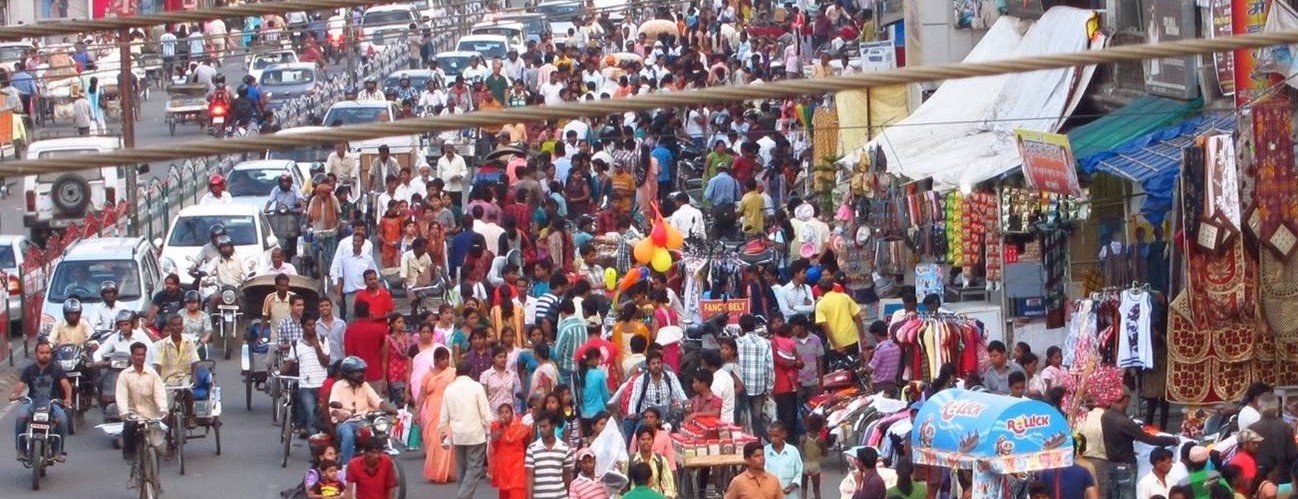Like most Indian cities, Ranchi, the fast-urbanising capital of Jharkhand, is struggling to provide efficient transport solutions to its urban population. Despite a high share of non-motorised transport modes, pedestrian and cycling infrastructure are non-existent. Lack of formal public transport systems mean that much of the population is dependant on shared auto rickshaws for commuting in the city. While these problems affect all sections of society, lack of safe mobility options acutely affect women, often forcing them to rush home before dark, severely affecting their access to education, jobs and opportunities.

Comparing modal shares for women with overall population in Ranchi reveals that commuting needs of women are significantly different from men.
A transport assessment led by ITDP last year, threw up some worrying facts. Almost 90 percent of women in Ranchi depend on walking or use semi-formal shared auto rickshaws to go to college or work. Even though almost all women surveyed said they felt unsafe in the share autos, only 1 percent said that they would consider switching to cycling. This is hardly surprising, considering 46 percent of women cyclists mentioned being teased on the roads and 59 percent were afraid of cycling down lonely roads. While this is not just a transportation issue, lack of reliable and affordable public transport, coupled with poor quality of streets and public spaces, only increase their exposure to these dangers.
ITDP presented these findings at a two-day workshop, ‘Building a strategic framework for women’s safety in Jharkhand’, organised in Ranchi on 17th and 18th February. The workshop, hosted by women’s rights organisation Jagori and supported by the Oak Foundation, brought together multiple civil society organisations from various sectors to discuss gender issues in Jharkhand.

Panelists from various organisations came together to discuss the issue of addressing women’s safety in Jharkhand.
The role of better public transport infrastructure in improving women’s safety was also reflected in the findings from women’s safety audits presented by Jagori. The audit, conducted as part of research on Women’s Safety in Public Spaces in Jharkhand, used a mobile app Safetipin to evaluate perception of safety in public spaces in two cities – Jharkhand and Hazaribagh. Using various parameters like lighting, openness, availability of transport and people density, the audit evaluated areas frequented by women and children such as bus stops, parks and marketplaces. Findings from the audit highlighted the need for well-lit streets and well-designed public spaces that provide ‘eyes on the street’. In addition, the audit also recommended the need to increase availability of public transport so as to provide comfortable and reliable services that can be used at all times of the day.

Creation of well-designed and well-lit public spaces around Ranchi’s extensive network of canals and waterways can offer transport solutions that also improve quality of life for all.
Both these studies indicate that good urban planning practices that provide better public transport facilities, improved street design with better lighting, creation of safe cycling environments can go a long way in furthering women’s access to public space. Improving public transport systems in Ranchi and creating better walking and cycling infrastructure, will not only provide affordable and sustainable transport options for all, but will also play a crucial role in empowering women by improving their access to opportunities.
Women now are claiming their right to urban spaces, to study work and lead a life free from any form of fear and sexual harassment, said Sunitha Dhar from Jagori. A collaborative effort from different organisations and stakeholders would be required to achieve this. “A core team including women’s groups should be set up to lead the process. Tribal dominated areas should also be integrated in the intervention plans,” said Reshma from AALI, a participant at the workshop.
Click here to download ITDP’s presentation on Transforming Ranchi. Complete findings from the transport assessment of Ranchi can be found in the report, Mobility for All.










